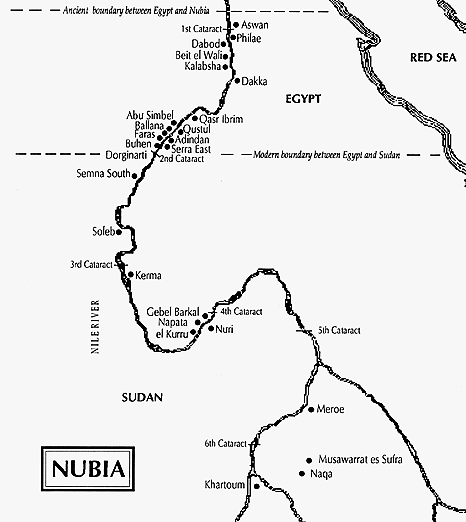

Royal pyramids were built in Nubia about 800 years after Egyptian pyramid building stopped. Above the third cataract the principle pyramids were built at el-Kurru, Gebel Barkal, Nuri and Meroe, containing approximately 220 pyramids.
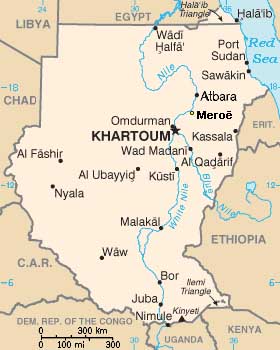
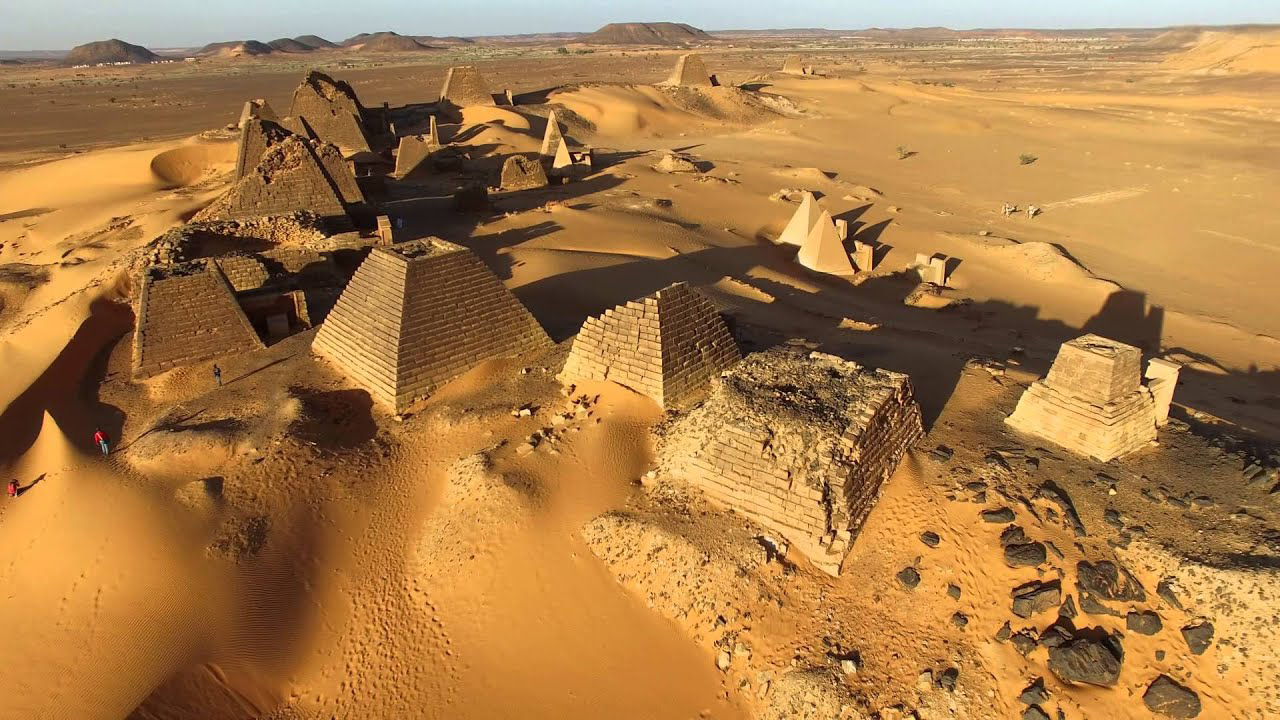
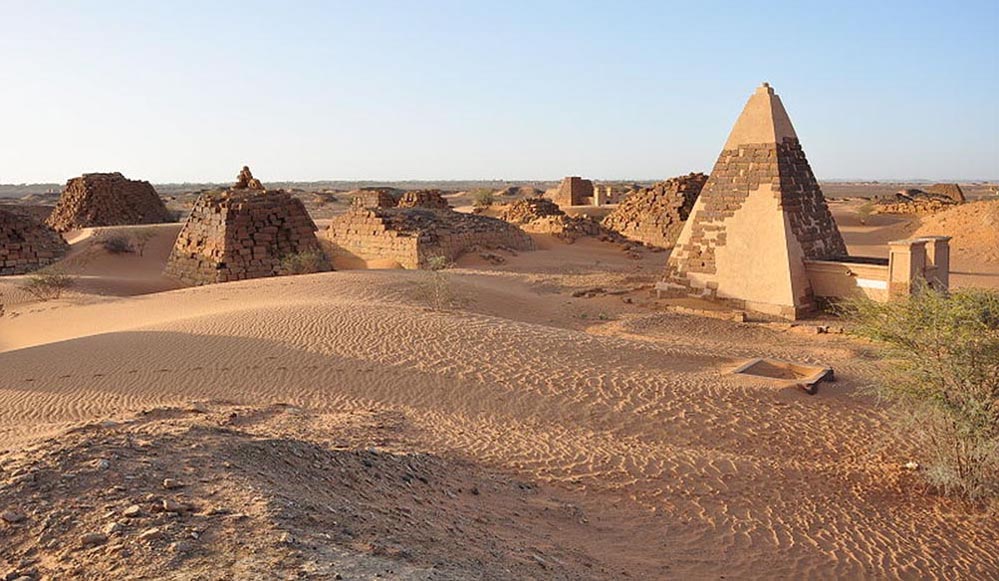
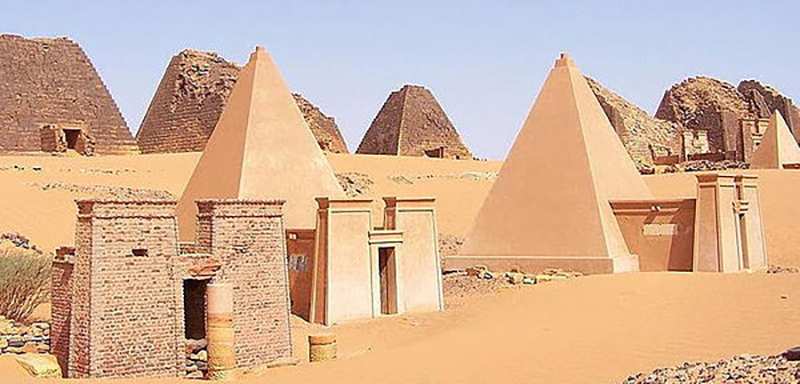
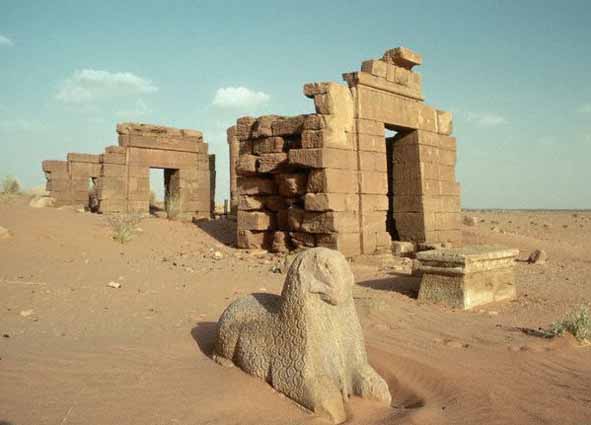
The Amun Temple served as a principle Kushite religious center near Shendi in what is now northern Sudan. This monumental statue is part of a group of twelve identical statues which form the alley leading to the Temple of Amon at Naga. The restoration of the ram's fleece, in spiral curls, is also found on the even larger statues which border the access to the Temple of Amon at Meroe.
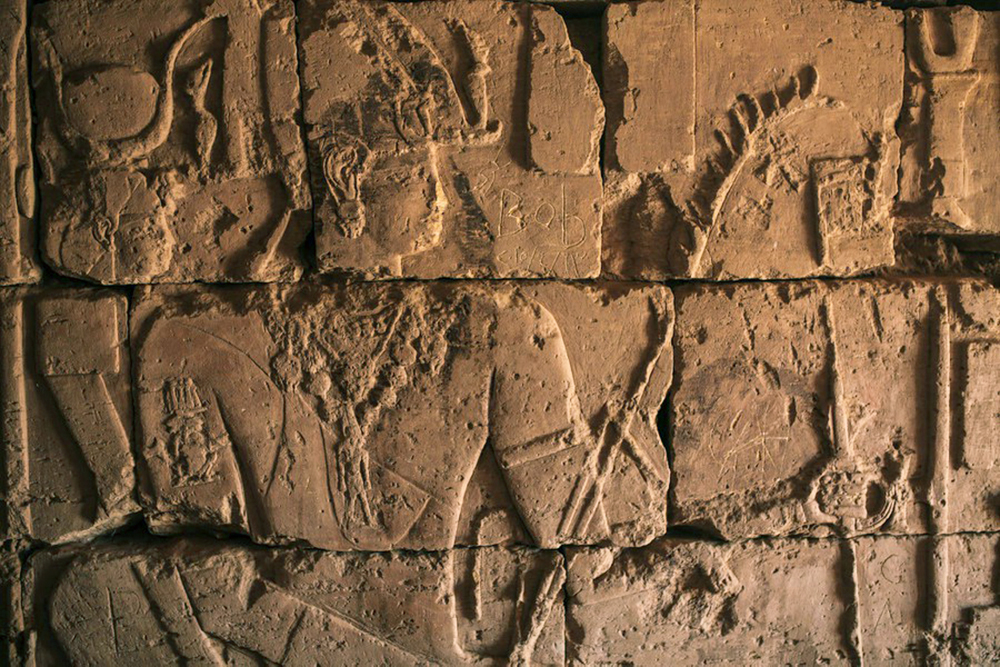
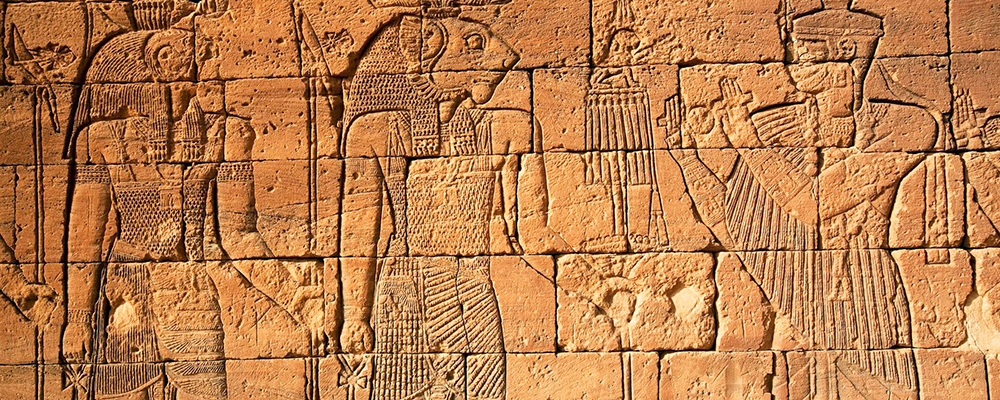
The area of the Nile valley known as Nubia that lies within present day Sudan was home to three Kushite kingdoms during antiquity: the first with its capital at Kerma (2400-1500 BC), that centred on Napata (1000-300 BC) and, finally, that of Meroe (300 BC-300).
Each of these kingdoms were strongly culturally, economically, politically and militarily influenced by the powerful pharaonic Egyptian empire to the north - and the Kushite kingdoms in turn competed strongly with Egypt, to the extent that during the late period of ancient Egyptian history the kings of Napata conquered and unified Egypt itself, ruling as the pharaohs of the Twenty-fifth Dynasty.
The Napatan domination of Egypt was relatively brief - it ended with the Assyrian conquest in 656 BC - but its cultural impact was enormous, and this coalesced into an extraordinary burst of pyramid-building activity that was sustained throughout the existence of Napata's successor kingdom, Meroe.
Approximately 220 pyramids were eventually constructed at three sites in Nubia to serve as tombs for the kings and queens of Napata and Meroe.
The first of these were built at the site of el-Kurru. These include the tombs of King Kashta and his son Piye (Piankhi), together with Piye's successors Shabaka, Shabataka and Tanwetamani, and 14 queens' pyramids.
Later Napatan pyramids were sited at Nuri, on the west bank of the Nile in Upper Nubia. This necropolis was the burial place of 21 kings and 52 queens and princes. The oldest and largest pyramid at Nuri is that of the Napatan king and twenty-fifth dynasty pharaoh Taharqa.
The most extensive Nubian pyramid site is at Meroe, which is located between the fifth and sixth cataracts of the Nile, approximately one hundred kilometres north of Khartoum. During the Meroitic period over forty kings and queens were buried there.
The physical proportions of Nubian pyramids differ markedly from the Egyptian edifices that influenced them: they are built of stepped courses of horizontally positioned stone blocks, and range from approximately six to thirty metres in height, but rise from fairly small foundation footprints that rarely exceed eight metres in width, resulting in tall, narrow structures inclined at around seventy degrees. Most also have small Egyptian-inspired offering temple structures abutting their base.
By comparison, Egyptian pyramids of similar height generally had foundation footprints that were at least five times larger, and were inclined at angles of between forty and fifty degrees.
All of the pyramid tombs of Nubia were plundered in ancient times, but wall reliefs preserved in the tomb chapels reveal that their royal occupants were mummified, covered with jewelry and laid to rest in wooden mummy cases.
At the time of their exploration by archaeologists in the 19th and 20th centuries, some pyramids were found to contain the remains of bows, quivers of arrows, archers' thumb rings, horse harnesses, wooden boxes and furniture, pottery, colored glass and metal vessels, and many other artifacts attesting to extensive Meroitic trade with Egypt and the Hellenistic world. Read more
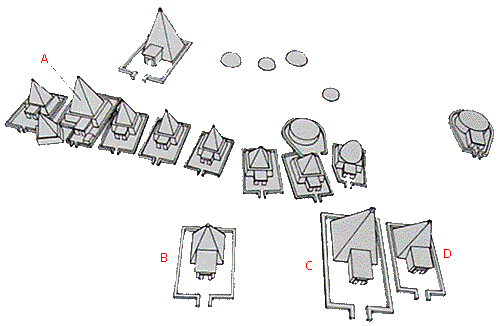
El-Kurru lies on the west bank of the Nile, about 13 km south from the Gebel Barkal. Excavations directed by G.Reisner in 1918-19 discovered on the cementery pyramids, which stood above tombs of kings of XXV Dynasty: Piankhi, Shabaka, Shabataka and Tanutamun.
Pyramid of Piankhi had a base length of about 8 m and a slope of probably about 68 degrees.
A stairway of 19 steps opened to the east and led to the burial chamber cut into the bedrock as an open trench and covered with a corbelled masonry roof.
Piankhi's body had been placed on a bed which rested in the middle of the chamber on a stone bench with its four corners cut away to receive the legs of the bed, so that the bed platform lay directly on the bench.
The pyramids of Piankhi successors were similiar. There were also 14 queens pyramids at el-Kurru, 6 to 7 m square, compared to the 8 to 11 metres of the king's pyramids. Northeast of the royal cementery, 24 graves of 24 horses and two dogs were found.
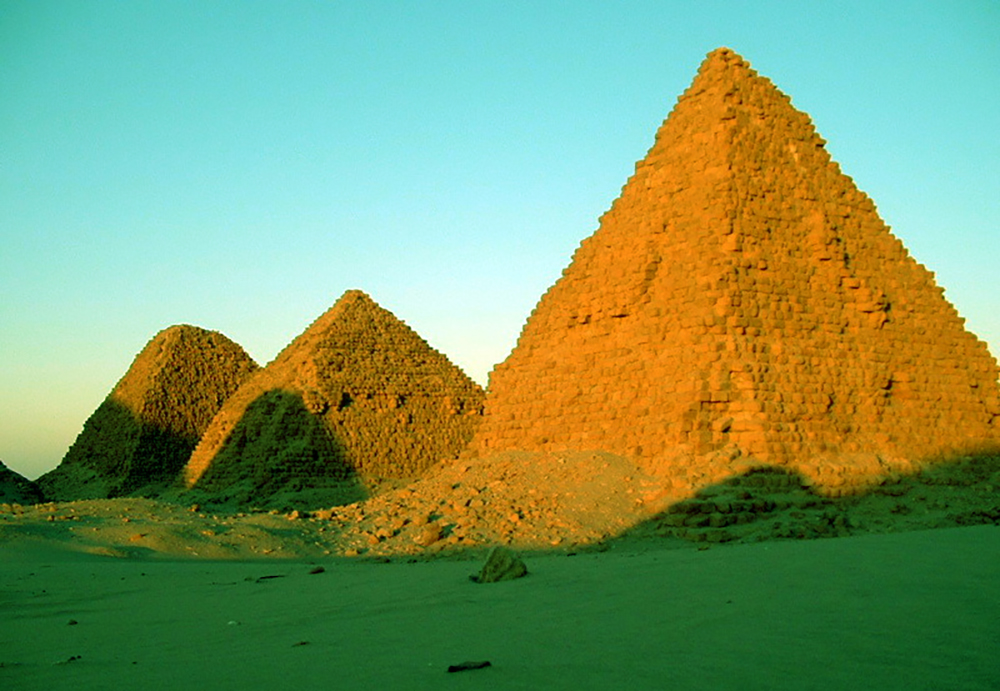
The pyramid field of Nuri contained 21 kings together with 52 queens and princeses. The first to build his tomb at Nuri was king Taharqa. His pyramid had 51.75 m square and 40 or 50 m high. Taharqa subterranean chambers are the most elaborate of any Kushite tomb.
The entrance was by an eastern stairway trench, north of the pyramid's central axis, reflecting the alignment of the original smaller pyramid.
Three steps led to a doorway, with a moulded frame, that opened to a tunnel, widened and heightened into an antechamber with a barrel-vaulted ceiling. Six massive pillars carved from the natural rock divide the burial chamber into two side aisles and a central nave, each with a barrel-vaulted ceiling.
The entire chamber was surrounded by a moat-like corridor entered steps leading down from in front of the antechamber doorway. After Taharqa 21 kings and 53 queens and princesess were buried at Nuri under pyramids of good masonry, using blocks of local red sandstone.
The Nuri pyramids were generally much larger than those at el-Kurru, reaching heights of 20 to 30 m. The last king to be buried at Nuri died in about 308 BC.
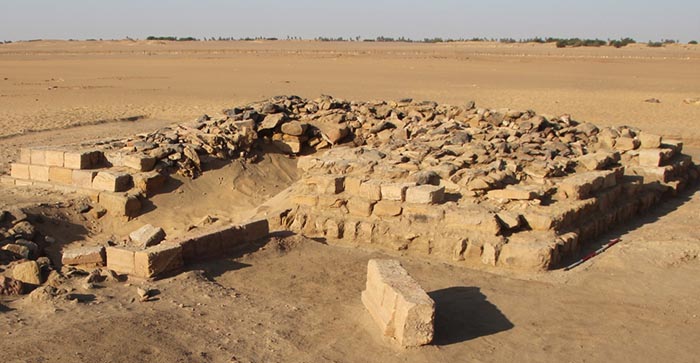
16 Pyramids Discovered in Ancient Sudan Cemetery
Live Science - September 16, 2015
The remains of 16 pyramids with tombs underneath have been discovered in a cemetery near the ancient town of Gematon in Sudan. They date back around 2,000 years, to a time when a kingdom called "Kush" flourished in Sudan. Pyramid building was popular among the Kushites. They built them until their kingdom collapsed in the fourth century AD. Derek Welsby, a curator at the British Museum in London, and his team have been excavating at Gematon since 1998, uncovering the 16 pyramids, among many other finds, in that time. The largest pyramid found at Gematon was 10.6 meters (about 35 feet) long on each side and would have risen around 13 m (43 feet) off the ground.
Wealthy and powerful individuals built some of the pyramids, while people of more modest means built the others. They're not just the upper-elite burials. In fact, not all the tombs in the cemetery have pyramids: Some are buried beneath simple rectangular structures called "mastaba," whereas others are topped with piles of rocks called "tumuli." Meanwhile, other tombs have no surviving burial markers at all.
Wealthy and powerful individuals built some of the pyramids, while people of more modest means built the others. They're not just the upper-elite burials. In fact, not all the tombs in the cemetery have pyramids: Some are buried beneath simple rectangular structures called "mastaba," whereas others are topped with piles of rocks called "tumuli." Meanwhile, other tombs have no surviving burial markers at all.
The Kushite kingdom controlled a vast amount of territory in Sudan between 800 B.C. and the fourth century A.D. There are a number of reasons why the Kushite kingdom collapsed. One important reason is that the Kushite rulers lost several sources of revenue. A number of trade routes that had kept the Kushite rulers wealthy bypassed the Nile Valley, and instead went through areas that were not part of Kush. As a result, Kush lost out on the economic benefits, and the Kush rulers lost out on revenue opportunities. Additionally, as the economy of the Roman Empire deteriorated, trade between the Kushites and Romans declined, further draining the Kushite rulers of income. As the Kushite leaders lost wealth, their ability to rule faded. Gematon was abandoned, and pyramid building throughout Sudan ceased. Wind-blown sands, which had always been a problem for those living at Gematon, covered both the town and its nearby pyramids.